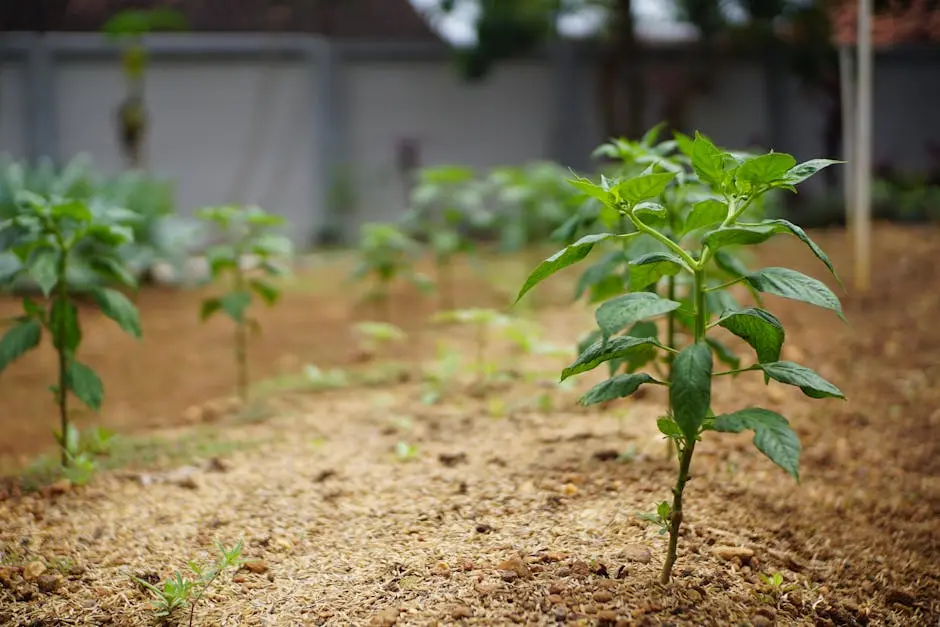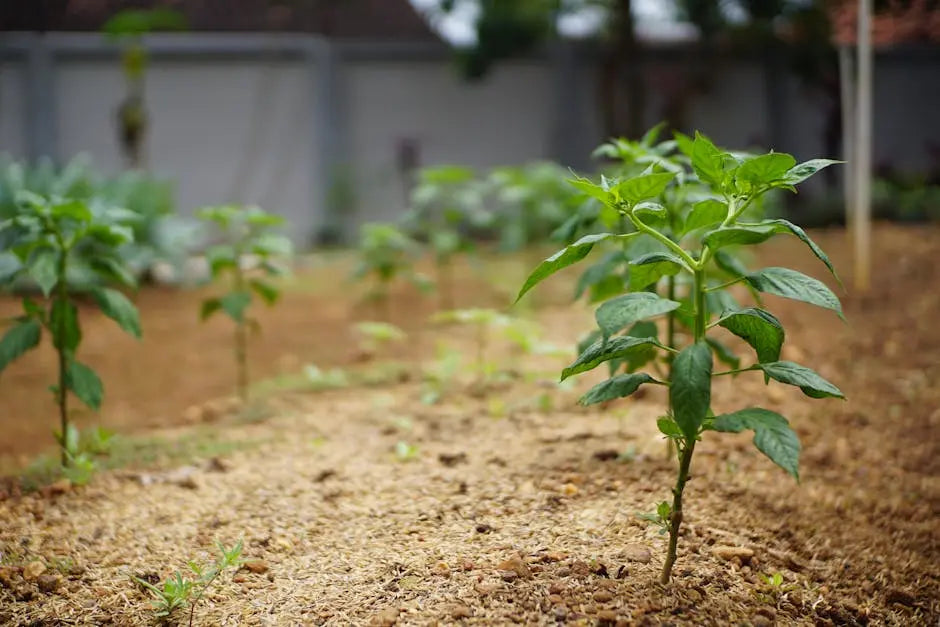Are you ready to transform your outdoor space into a vibrant paradise filled with fresh vegetables and fragrant flowers? Growing a bountiful garden can be both an exciting and rewarding endeavor, especially when you start with organic seed collections. In this guide, we’ll walk through essential steps that will help you cultivate a thriving garden. Let’s dig in!
1. Choosing the Right Organic Seeds
Start your gardening journey by selecting high-quality organic seeds that suit your climate and preferences. Understanding the specifics of what your garden can support is crucial. Look for seeds that are adapted to your local growing conditions, as this can make a significant difference in your success rate. For instance, if you live in a cooler climate, consider varieties that are known to thrive under such conditions.
Additionally, don’t hesitate to explore heirloom varieties, which can bring both unique flavors and fascinating history to your garden. These organic seed collections often produce crops that are not only delicious but can also add diversity to your meals. Remember, the choices you make now will play a pivotal role in the abundance of your future harvest!
2. Understanding Your Soil Type
Learn about different soil types and how to amend your soil to create the perfect foundation for your plants. Soil is more than just dirt; it’s a living ecosystem that affects everything from nutrient availability to water retention. Start by testing your soil for pH and nutrient levels—this information will guide you in making essential amendments. If you find your soil lacking, consider adding organic matter like compost or well-rotted manure.
Remember, good soil leads to healthy plants. Rich, organic soil is essential for encouraging root development, water absorption, and disease resistance. Notably, the texture of your soil (sandy, loamy, or clay) will influence how it drains and holds nutrients. Take the time to nurture your soil properly, and it will reward you with flourishing plants.
3. Planning Your Garden Layout
Design your garden layout considering sunlight, space, and companion planting to maximize growth. Start by sketching out your garden area and noting which parts get the most sunlight during the day. Many vegetables and flowers prefer full sun, while some do better in partial shade. Having this information allows you to make informed decisions on where to plant each variety.
Companion planting is another intricate aspect of a successful garden layout. For example, planting tomatoes alongside basil can improve flavor and help prevent pests. By planning your garden strategically, you not only ensure your plants thrive, but also create a visually appealing space that will bring you joy. Embrace the opportunity to be creative and experiment with your layout!
4. Preparing Your Garden Beds
Get your garden beds ready by tilling, adding compost, and ensuring good drainage for healthy plants. Tilling helps to aerate the soil and integrates the organic material evenly. It’s your first real step in preparing for a bountiful harvest. As you work the soil, take the time to break up any clumps that may be compacted, ensuring that the roots of your plants have ample space to grow.
Installing proper drainage is vital, especially in areas prone to heavy rainfall. Raised beds can be a practical solution and often enhance temperature consistency. While preparing your garden beds is labor-intensive, it sets the stage for everything that comes after, providing the stability and nutrients your plants will rely on for their growth.
5. Starting Seeds Indoors
Discover the benefits of starting seeds indoors and how to create an ideal environment for germination. Starting seeds inside can extend your growing season significantly, especially in cooler climates. You’ll get a head start on the growing cycle, allowing your plants to mature before the harsh outdoor conditions set in. Using seed trays or biodegradable pots will help you manage your indoor garden efficiently.
Ensure that your indoor environment has proper lighting and temperature control. Many gardeners invest in grow lights to mimic sunlight, providing seedlings with the energy they need to thrive. Be mindful not to overcrowd your seedlings; give each plant enough space to develop strong roots. The care you take during this stage can greatly enhance plant health when it comes time to transplant them.
6. Transplanting Seedlings
Learn the best practices for transplanting your seedlings into the garden, ensuring they thrive in their new home. It’s essential to harden off your seedlings first, which means gradually acclimating them to outdoor conditions by exposing them to sunlight and wind over several days. This process minimizes transplant shock and prepares them for their permanent home.
When ready to transplant, choose a cool, overcast day if possible. Dig a hole larger than the seedling’s root ball, plant it gently, and fill in with soil, gently packing it around the roots. Water each plant immediately after transplanting to help settle the soil and provide hydration. The excitement of seeing your seedlings flourish in their new environment is one of the most gratifying moments of gardening.
7. Watering Wisely
Understand the importance of watering and how to establish a consistent watering routine to keep your garden healthy. Proper watering is key to sustaining your plants; too little can lead to stress, while too much can cause root rot. A general rule of thumb is to water deeply but less frequently, allowing the soil to dry out slightly between watering sessions. This encourages roots to grow deeper, making your plants more resilient.
Utilizing mulch can help retain moisture in the soil, reducing the frequency of irrigation. Monitor your garden regularly; observing your plants will give you indicators of their watering needs. Over time, you’ll develop a sense of when they’re thirsty and can cater to their requirements more intuitively.
8. Implementing Organic Pest Control
Explore natural methods to protect your garden from pests while keeping it chemical-free. One effective strategy is to diversify your plantings, which can confuse pests and keep them at bay. Introducing beneficial insects, such as ladybugs and lacewings, can also help manage populations of harmful pests naturally.
Another technique you can use is to create homemade insecticidal soap, which can deter pests without harming your plants. Furthermore, regular inspections of your plants allow you to identify problem areas early, ensuring that a minor issue doesn’t turn into a larger infestation. In short, staying proactive helps protect your organic seed collections and maintain the integrity of your garden.
9. Fertilizing Naturally
Learn how to use organic fertilizers to nourish your plants and promote robust growth. Unlike chemical fertilizers that might cause rapid growth but leave soil depleted, organic options such as compost, worm castings, and seaweed extract improve soil quality over time. These natural amendments not only provide nutrients but also enhance the microbial life in your soil.
Make it a habit to test your soil regularly to track nutrient levels and adjust your fertilization strategies accordingly. Additionally, applying fertilizers at key growth stages can provide your plants with the boost they need to thrive. Embracing this sustainable approach to fertilizing will undoubtedly lead to healthier plants and a more vibrant garden.
10. Mulching for Moisture Conservation
Discover the advantages of mulching and how it can help retain moisture and suppress weeds. Applying a layer of organic mulch, like straw or wood chips, around your plants can work wonders in maintaining soil moisture and creating a more stable temperature environment. Not only does this method reduce the need for frequent watering, but it also minimizes competition for nutrients by suppressing weed growth.
Additionally, as the organic mulch decomposes, it contributes valuable nutrients back into the soil, supporting your garden’s health year after year. Implementing good mulching practices is a simple yet effective way to enhance your gardening efforts without excessive added labor.
11. Harvesting Your Produce
Find out when and how to properly harvest your fruits and vegetables to enjoy the fruits of your labor. Timing is crucial—most fruits and vegetables are at their peak flavor and nutrition when harvested at the right moment. Use your knowledge of each plant’s growth cycle to determine the optimal harvesting time, observing signs like color change, firmness, or the ease of detaching the produce from the plant.
Utilizing sharp tools can prevent damage to both the plant and the produce during harvesting. Create a special routine to enjoy this process; it can be a rewarding moment to celebrate your hard work. Harvesting should be a joyful time, filled with anticipation for culinary adventures that lie ahead with your homegrown food!
12. Enjoying the Fruits of Your Labor
Celebrate your successful garden by exploring various ways to use and preserve your homegrown bounty. Cook fresh meals featuring your produce, share with neighbors and friends, or even engage in canning to enjoy your harvest long after the growing season has ended. The satisfaction of turning your garden’s bounty into delicious dishes will deepen your appreciation for all the time and effort you put into your gardening journey.
Moreover, consider keeping a garden journal documenting your experiences—what worked, what didn’t, and what you learned along the way. This reflection not only solidifies your successes but also prepares you for even greater accomplishments in future gardening endeavors. It’s about nurturing your passion, fostering community, and having fun—so get out there and enjoy every moment!






